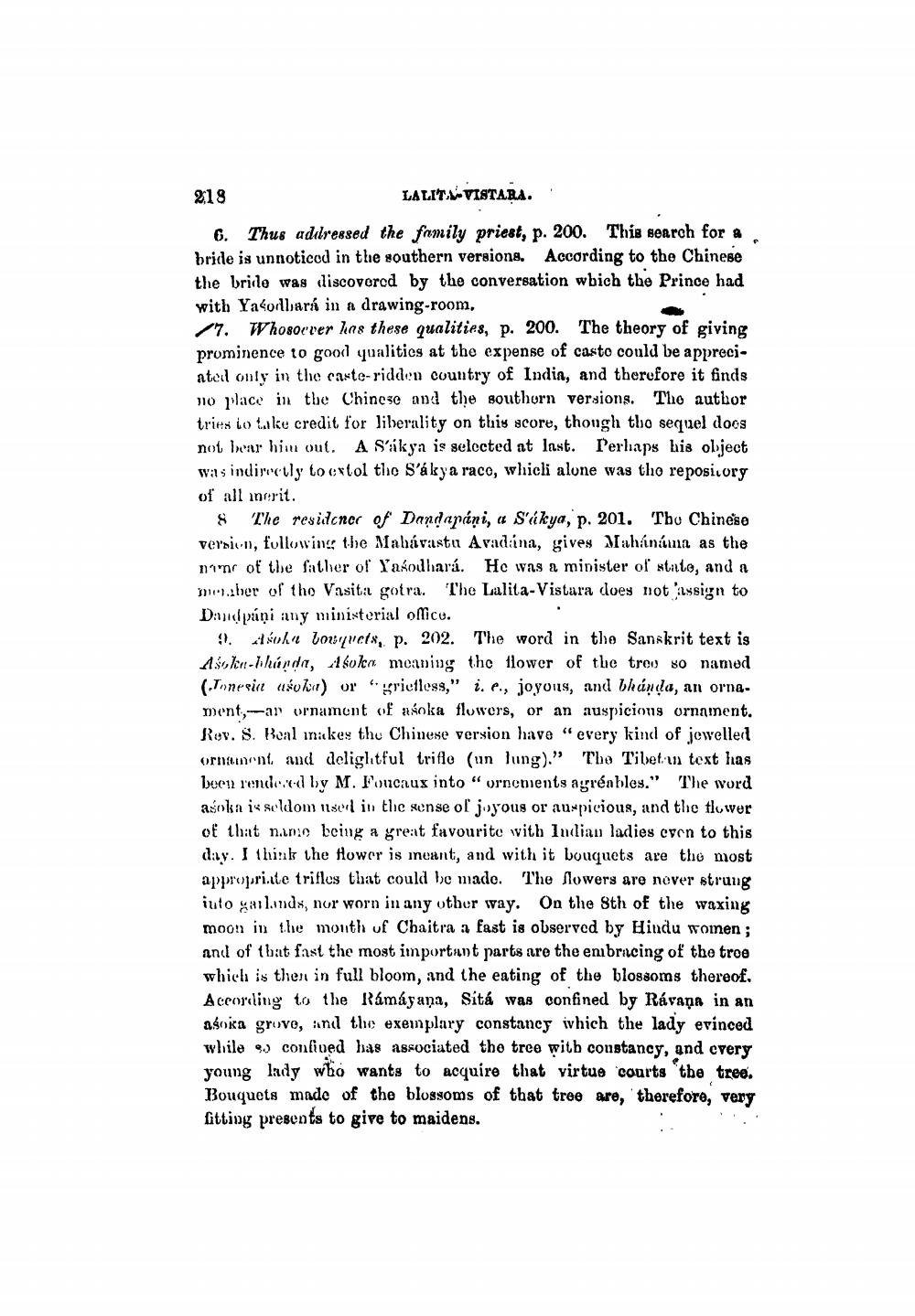________________
218
LALIT.. VISTARA. 6. Thus adiressed the family priest, p. 200. This search for a bride is unnoticod in the southern versions. According to the Chinese the bride was discovered by the conversation wbich the Prince had with Yacollars in a drawing-room,
7. Whosoever has these qualities, p. 200. The theory of giving prominence to good qualities at the expense of casto could be appreciated only in the caste-ridden country of India, and therefore it finds 110 place in the Chinese and the southorn versions. Tho author tries to take credit for liberality on this score, though tho sequel doos not bear him out. A Sikya is selected at Inst. Perhaps his object was indirectly to extol the S'ákya raco, whicli alone was the repository of all innrit.
$ The residence of Dandapáni, a S'ákya, p. 201. Thu Chinese vernin, following the Mahávastu Avadána, gives Mahánáma as the name of the father of Yasodhará. He was a minister of state, and a D aher of the Vasita gotra, The Lalita -Vistara does not assign to Daudpaņi any ministerial olicu.
9. excha louquets, p. 202. The word in the Sanskrit text is dsokr-lhánda, Asoka meaning the flower of the treo so named (Tonesin ook) or "rictless," i.P., joyous, and bhánda, an orna. ment,-ar ornament of asoka flowers, or an auspicious ornament. Ruv. S. Beal makes thu Chinese version have "every kind of jewellert ornament and delightful triflo (un lung).” Tho Tibet. un text has been rendered by M. Foucaux into “orncnients agréables." The word asoka is seldom Ilsed in the sense of jyous or auspicious, and the tluwer of that ninao being a great favourite with Indian ladies even to this day. I think the Hower is meant, and with it bouquets are the most appropriate trifles that could be made. The lowers are never strung iuto garlands, nor worn in any other way. On the 8th of the waxing moon in the month of Chaitra a fast is observed by Hindu women; and of that fast the most important parts are the embracing of the troe which is then in full bloom, and the eating of the blossoms thereof. According to the Rámájana, Sita was confined by Rávana in an asoka grove, and the exemplary constancy which the lady evinced while e confined has associated the tree with constancy, and cvery young lady who wants to acquire that virtue courts the tree. Bouquets made of the blossoms of that tree are, therefore, very fitting presents to give to maidens.




